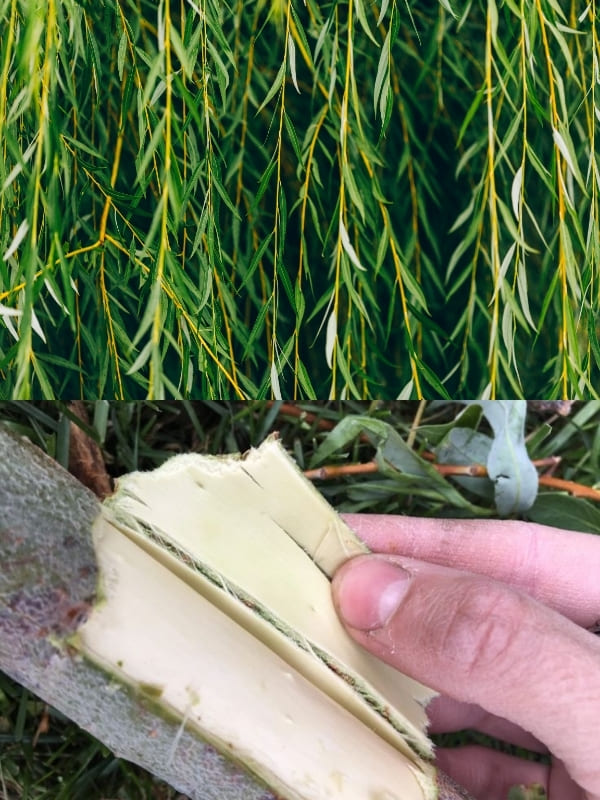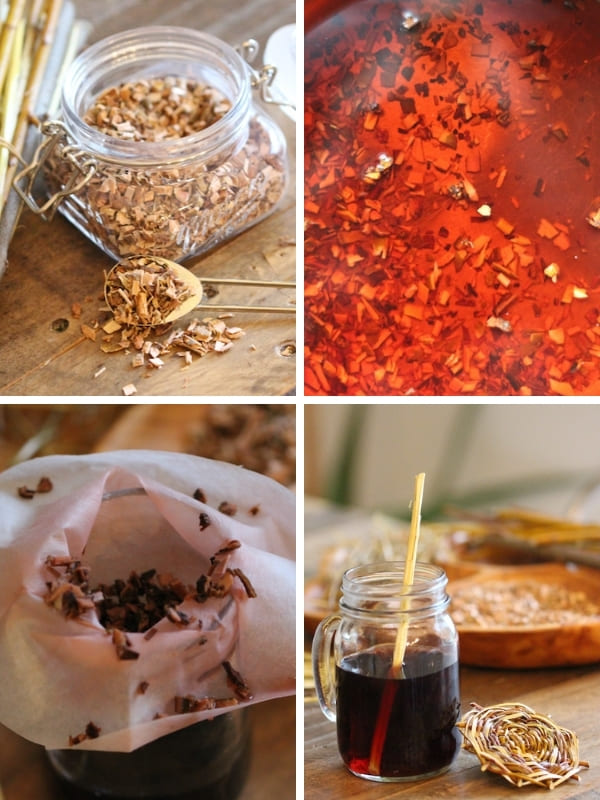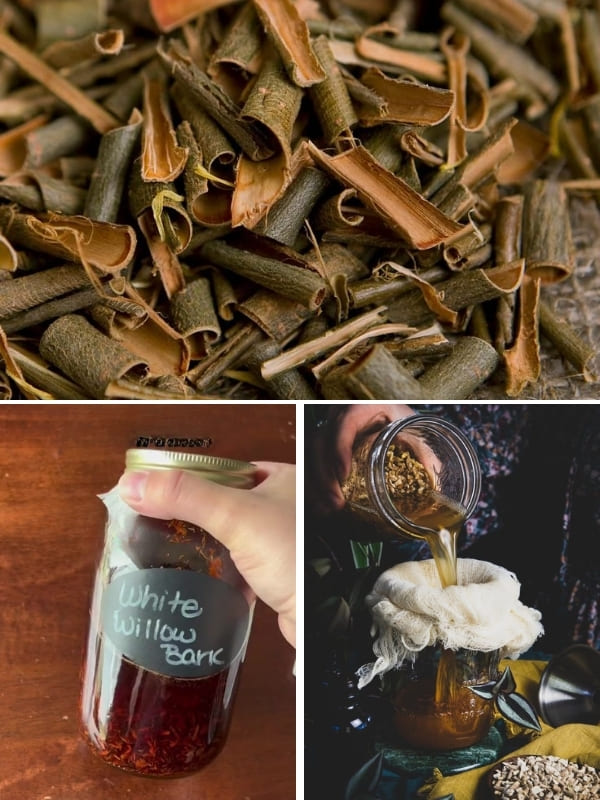If you’re tired of relying on over-the-counter painkillers and want a natural alternative that’s been trusted for centuries, willow bark might be the solution you need. Used since ancient times, this remarkable tree bark contains salicin, the natural compound that inspired aspirin.
But unlike synthetic pain relievers, willow bark offers a gentler, holistic approach to pain management while providing additional benefits for overall well-being.
Ready to discover how this natural remedy can transform your health? Let’s explore the incredible benefits of willow bark and how to use it effectively!
1. A Natural Painkiller That Works Like Aspirin
Willow bark is often called “nature’s aspirin” because it contains salicin, a compound that reduces pain and inflammation.
When consumed, salicin is converted into salicylic acid in the body, which helps relieve headaches, muscle pain, and joint discomfort.
A study published in the American Journal of Medicine found that willow bark extract was effective in reducing lower back pain, with fewer side effects than conventional NSAIDs.
If you’re looking for a natural way to manage everyday aches and pains, willow bark might be a game-changer.

2. Reduces Inflammation and Supports Joint Health
Chronic inflammation is linked to arthritis, heart disease, and other health issues. Willow bark contains polyphenols and flavonoids, which have potent anti-inflammatory effects.
Research in the Phytotherapy Research Journal showed that willow bark extract significantly reduced inflammation markers in individuals with osteoarthritis, improving mobility and reducing discomfort.
Incorporating willow bark into your routine could help support long-term joint health and overall well-being.
3. Supports a Healthy Immune System
Beyond pain relief, willow bark contains antioxidants that help fight free radicals, protecting your body from oxidative stress.
A study in Oxidative Medicine and Cellular Longevity revealed that willow bark extract boosts immune function by reducing cellular damage. This makes it an excellent addition to your wellness routine, especially during cold and flu season.

4. May Aid in Weight Management
Did you know that willow bark could help support weight loss? Some studies suggest that its active compounds may enhance metabolism and fat-burning.
Research published in The Journal of Medicinal Food indicates that willow bark extract can improve metabolic function, making it a potential tool for those looking to manage weight naturally.
5. Promotes Heart Health
Willow bark’s anti-inflammatory properties extend to cardiovascular health. Studies suggest that salicin helps reduce blood clot formation, improve circulation, and reduce the risk of heart disease.
According to The Journal of Thrombosis and Haemostasis, regular use of willow bark may support a healthy heart by lowering inflammation and improving vascular function.

How to Harvest Willow Bark
Harvesting willow bark is a straightforward but careful process to ensure the tree remains healthy while you collect its powerful medicinal properties.
The best time to harvest is in early spring when the sap is flowing or in autumn before the tree goes dormant. Look for young branches, as they contain the highest concentration of salicin and active compounds.
Step-by-Step Guide to Harvesting Willow Bark
1. Choose the Right Willow Tree:
Identify a healthy willow tree species such as white willow (Salix alba), black willow (Salix nigra), or another medicinal variety. Ensure the tree is free from disease, pesticides, or pollution.
2. Select Young, Thin Branches:
Instead of cutting large sections of the trunk, focus on young branches that are about 1–2 inches in diameter. These have the freshest, most potent bark while allowing the tree to continue growing.
3. Use a Sharp Knife or Pruners:
Cut a few small branches, avoiding overharvesting from a single tree. Aim for sustainable harvesting by taking only what you need and allowing the tree to heal.
4. Remove the Outer Bark Layer:
With a sharp knife, carefully peel away the thin, papery outer bark to expose the smooth inner bark. This inner layer contains the highest concentration of beneficial compounds.
5. Cut or Shred the Bark:
Slice the inner bark into small strips or pieces for easier drying and storage.
6. Dry the Bark Properly:
Spread the bark pieces on a clean surface in a warm, well-ventilated area out of direct sunlight. Drying can take a few days to a week, depending on humidity levels. Once completely dry, store in an airtight container away from moisture and heat.

Tips for Sustainable Harvesting
- Rotate between trees to avoid stressing a single tree.
- Never strip bark from the trunk; this can harm or even kill the tree.
- Leave at least half of the bark on the branch so it can continue to grow.
By harvesting willow bark responsibly, you can enjoy its medicinal benefits while ensuring the tree’s long-term health.
How to Use Willow Bark for Maximum Benefits
Willow bark can be used in various forms, whether fresh, dried, or processed into extracts and capsules. Here are some effective ways to prepare and use it:
1. Willow Bark Tea
Ingredients:
- 1–2 teaspoons of dried willow bark (or a small handful of fresh bark)
- 1 cup of hot water
- Optional: Honey or lemon for taste
Instructions:
- Bring water to a boil and add the willow bark.
- Let it steep for 10–15 minutes (or simmer for 20 minutes for a stronger brew).
- Strain and sip slowly. Drink up to twice a day for pain relief and inflammation reduction.

2. DIY Willow Bark Tincture
Ingredients:
- 1 cup of dried willow bark
- 2 cups of alcohol (vodka or brandy)
- A glass jar with a lid
Instructions:
- Place the dried willow bark in the jar and pour the alcohol over it.
- Seal and shake the jar, then store it in a cool, dark place for 2–4 weeks.
- Shake occasionally, then strain and transfer the liquid to a dark glass bottle.
- Use 1–2 dropperfuls in water or tea as needed for pain relief.

3. Willow Bark Capsules or Extracts
Available at health stores or online, these provide a convenient way to get a precise dosage. Follow the manufacturer’s recommendations, typically around 120–240 mg of salicin per day.
4. Topical Willow Bark Application
Ingredients:
- A few drops of willow bark extract or tincture
- Carrier oil (coconut, olive, or almond oil)
Instructions:
- Mix a few drops of willow bark extract with carrier oil.
- Gently massage onto sore muscles or aching joints for localized relief.
- Repeat as needed to ease discomfort.
For best results, start with a small dose to see how your body responds and adjust accordingly.

Cautions and Precautions
Willow bark is a potent natural remedy, but it isn’t suitable for everyone. Those allergic to aspirin or prone to stomach ulcers, bleeding disorders, or digestive conditions should avoid it, as it can worsen these issues.
Additionally, individuals on blood thinners, NSAIDs, or medications that affect clotting must consult a doctor before use to prevent adverse interactions.
Children, pregnant or breastfeeding women, and those with kidney or liver disease should steer clear unless a medical professional advises otherwise.
Overuse or excessive doses can lead to stomach discomfort, nausea, tinnitus (ringing in the ears), or digestive distress, so it’s crucial to consume it in moderation. If any negative symptoms arise, stop using it immediately and seek medical advice.
Before adding willow bark to your routine, conduct a patch test for topical use and begin with a minimal dose when consuming it internally. Paying close attention to how your body reacts will ensure both safe and effective use.
Disclaimer
This article is for informational purposes only and should not be considered medical advice. Always consult a healthcare professional before using willow bark, especially if you have existing health conditions or take medications.

Forget Aspirin! This Ancient Tree Bark Works Even Better for Pain and Inflammation
